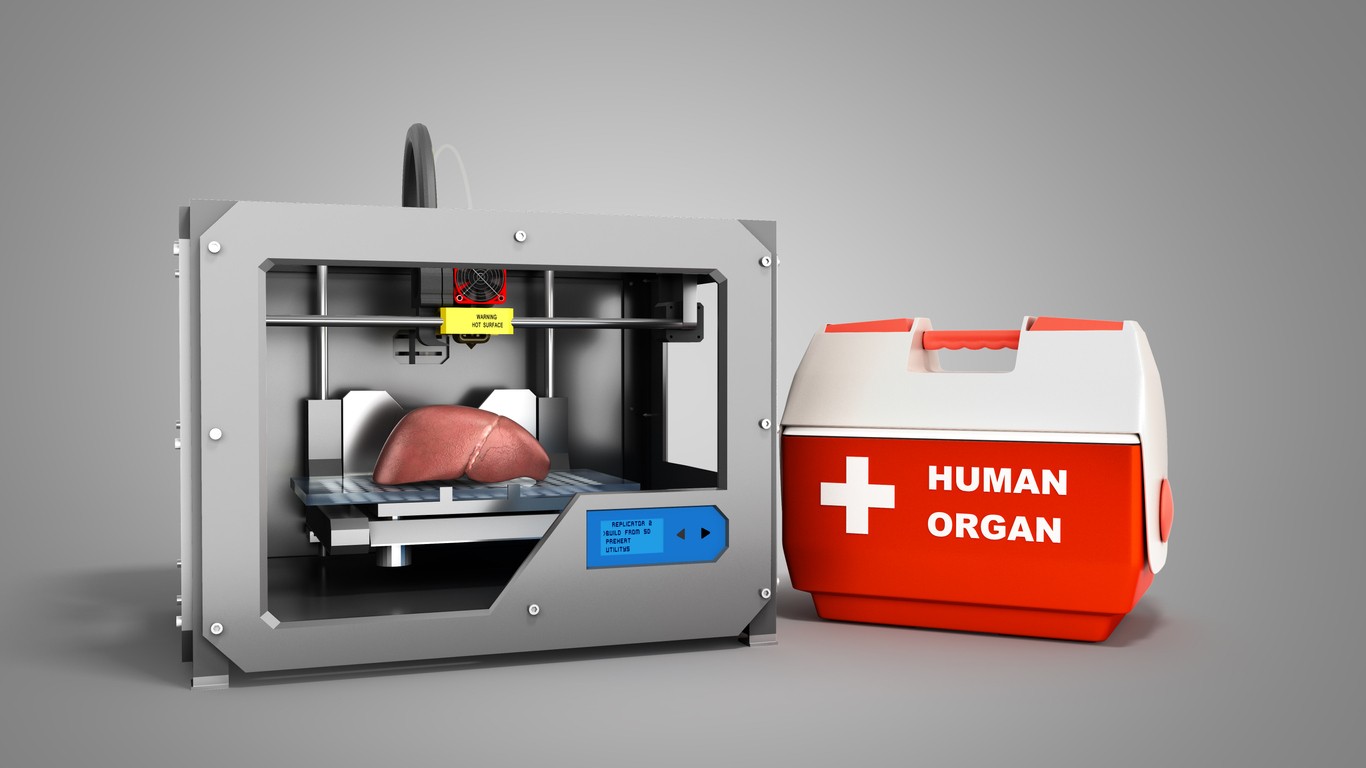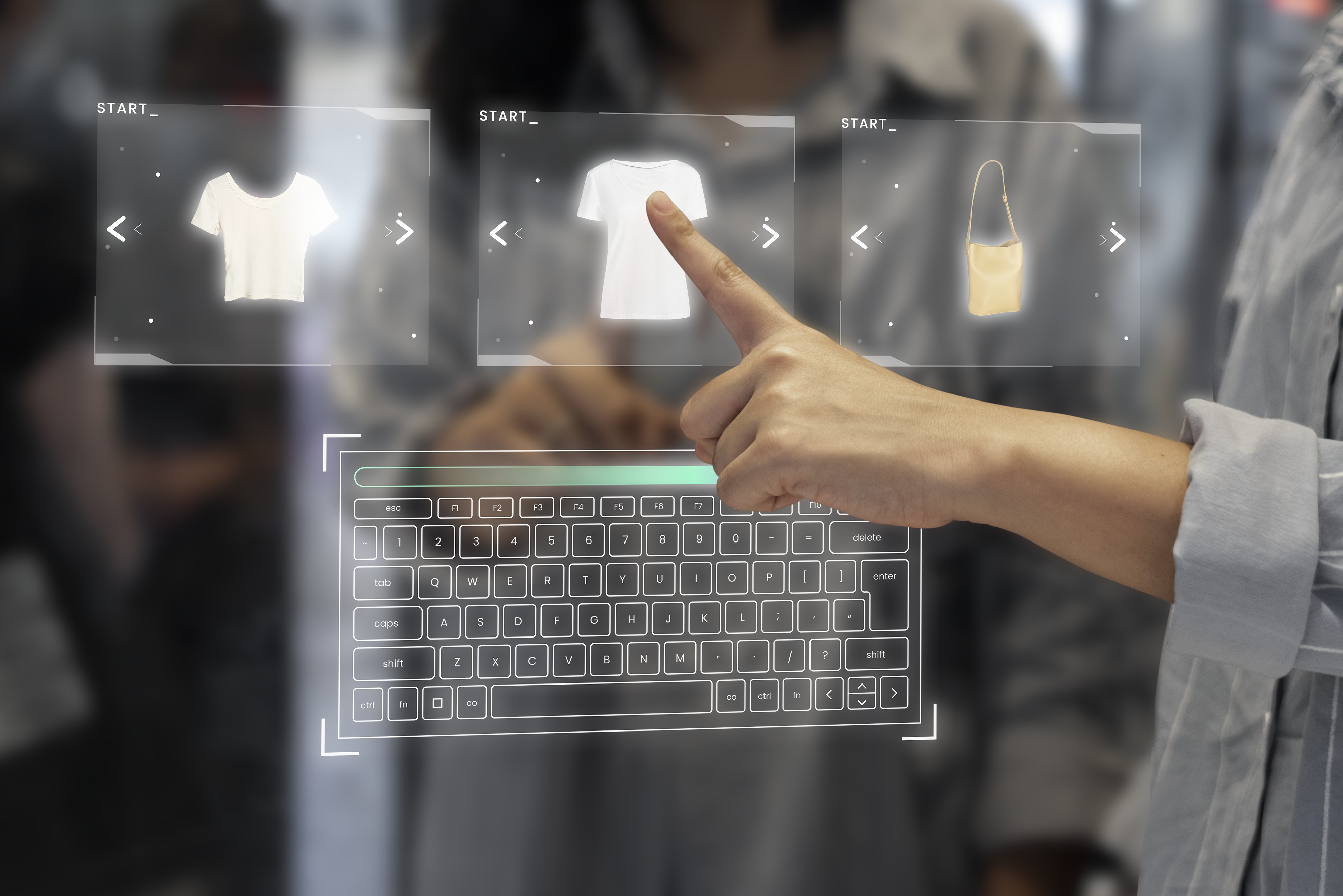Overview
3D bioprinting involves the creation of three-dimensional structures that mimic natural tissues by utilising bio-inks mixed with living cells. This innovative technology allows researchers to study human body functions in vitro, with bioprinted structures proving to be more biologically relevant than those created in two dimensions. The potential applications of 3D bioprinting include tissue engineering, bioengineering, materials science, pharmaceutical development, and organ creation. Its ability to mimic natural tissue structures accurately offers a significant advantage in medical research and development.
The 3D bioprinting market is projected to expand significantly, with an estimated worth of USD 11.2 billion by 2027 and a compound annual growth rate of 22.2%.
This growth is primarily attributed to the increasing demand for customised medical solutions, research and development initiatives in 3D bioprinting, collaborations with pharmaceutical and medical device companies, and government funding.
Drivers:
The market for 3D healthcare bioprinting is growing rapidly, driven by many factors, including:
- Increasing demand for personalised medical devices: The innovative technique of 3D bioprinting offers the possibility of crafting medical devices that are tailor-made to address the unique requirements of each patient. Unlike conventional manufacturing approaches that churn out standardised devices with limited customisation, 3D bioprinting enables the creation of personalised solutions optimised for individual patients. This cutting-edge methodology could revolutionise the medical industry and improve patient outcomes.
- Growing need for tissue and organ regeneration: 3D bioprinting can potentially transform the medical industry drastically. This technology makes it possible to create customised scaffolds that contain living cells. These scaffolds can then regenerate tissues and entire human body organs. This groundbreaking advancement could offer new hope to individuals suffering from chronic injuries, cancer, and congenital disorders. With the ability to engineer replacement tissues and organs, doctors can provide more effective and personalised treatments for various medical conditions.
- Advancements in 3D printing technologies.: The advancements in 3D printing technologies have allowed the development of highly intricate and lifelike bio-printed structures. As a result, it has become feasible to fabricate tissues and organs that closely resemble their natural counterparts, paving the way for groundbreaking progress in biomedical engineering.
- Increasing bio-ink availability: Bio inks refer to specialised materials for creating bio-printed structures. Utilising a diverse range of bio-inks has opened up the possibility of printing a wider range of tissues and organs, thereby expanding the potential applications of bioprinting technology.
- Growing investment in 3D healthcare bioprinting: Numerous private and public entities are investing substantially in the research and development of 3D healthcare bioprinting. Their efforts are instrumental in advancing bioprinting technologies and discovering innovative applications. As these factors continue to drive the growth of the market, 3D healthcare bioprinting is poised to revolutionise how healthcare is delivered.
- Increasing prevalence of chronic diseases: Chronic diseases pose a significant challenge to healthcare systems across the globe. However, 3D healthcare bioprinting holds immense potential in offering novel treatment options for various chronic ailments such as diabetes, heart disease, and cancer.
- The rising cost of healthcare: Healthcare costs are skyrocketing, becoming a huge burden on healthcare systems globally. Luckily, a solution can help cut the costs of 3D healthcare bioprinting. Through this innovative technology, medical devices and therapies can be produced more efficiently than ever before. It's a game-changer for the healthcare industry.
- The ageing population: The world's population is getting older and older, which means there is a growing need for medical devices and treatments to improve the quality of life for older people. 3D healthcare bioprinting is a promising technology that could offer innovative solutions for various age-related illnesses and ailments.
Opportunity
3D bioprinting creates 3D structures using living cells and biocompatible materials. It can potentially revolutionise healthcare by producing living tissues and organs for medical and research purposes. However, new opportunities and advancements may have emerged since this information was last updated.
This technology has a wide range of potential applications in healthcare, including:
- Organ Transplantation: The cutting-edge technology of 3D bioprinting can revolutionise the world of transplantations by enabling the creation of fully functional organs and tissues. This breakthrough could help address the pressing organ shortage issue and alleviate the long wait times for patients needing life-saving transplants.
- Tissue engineering and regenerative medicine: Bioprinting technology has shown promise in regenerating damaged or degenerative tissues. 3D bioprinting can help create artificial tissues and organs to replace or repair damaged tissues by creating scaffold-like structures. This has great potential for treating conditions like heart disease, cancer, and spinal cord injuries.
- Personalised Medicine: The world of bioprinting presents an array of possibilities that seem almost limitless. One can only imagine the vast potential of creating customised tissues and organs to meet a patient's unique requirements. This groundbreaking technology enables personalised treatments and opens the door to innovative drug testing and disease modelling, thus paving the way for more effective and targeted therapies. The impact this could have on individual patient care is truly thrilling.
- Drug Development and Testing: The world of pharmaceutical research is constantly evolving, and bioprinted tissues are at the forefront of this exciting progress! These tissues can more accurately replicate human physiology compared to traditional cell cultures. This makes them a crucial tool for drug testing and development, paving the way for safer and more efficient practices in the industry. Plus, with reduced reliance on animal testing, bioprinted tissues are helping us move towards a more ethical and sustainable future.
- Disease Modeling: The advent of bio-printed tissues has brought about a significant revolution in disease research. With the ability to generate models of various diseases, researchers can now delve deeper into the intricacies of disease mechanisms and consequently develop more effective treatment approaches. This remarkable breakthrough is undoubtedly an essential milestone in medicine and is bound to facilitate more pioneering discoveries in the future.
- Surgical Training and Education: The field of medicine has been revolutionised by the advent of 3D bioprinting, which has become a game-changer for medical students and surgeons alike. Thanks to the incredible capabilities of this innovative technology, learners can now benefit from hyper-realistic surgical models and simulators that allow them to refine their techniques and achieve superior surgical outcomes. With 3D bioprinting, the possibilities for medical education are truly limitless.
- Customised Prosthetics and Implants: The potential of having an implant or prosthetic designed to fit your body like a glove is incredible. Bioprinting has made this possible! This advanced technology can create personalised creations customised to a patient's unique anatomy and specific needs. It's a remarkable breakthrough in the field of medical science.
- Bio-fabrication in Space: The boundless horizons of space exploration are truly mesmerising. It is truly astounding to know that 3D bioprinting technology has the potential to create critical medical supplies, tissues, and even organs that could be indispensable during extended space missions. This is a testament to the remarkable power of technology in helping us conquer the predicaments that come with space travel.
Our prospective
3D bioprinting holds immense potential in revolutionising healthcare by enabling the creation of living tissues and organs via 3D printers. This technology can address the persistent organ donor shortage while allowing personalised treatments. Advancements in 3D bioprinting have already shown remarkable promise in repairing damaged skin, treating corneal blindness, and creating synthetic blood vessels. Looking ahead, bioprinting could potentially facilitate the creation of fully functional organs and personalised cancer models. Nonetheless, several challenges must be addressed before bioprinting is adopted as a mainstream medical technology. These challenges include improving bio-inks, refining printing techniques, and acquiring clinical data. Once these issues are resolved, 3D bioprinting will likely become a powerful tool for improving human health and well-being.





